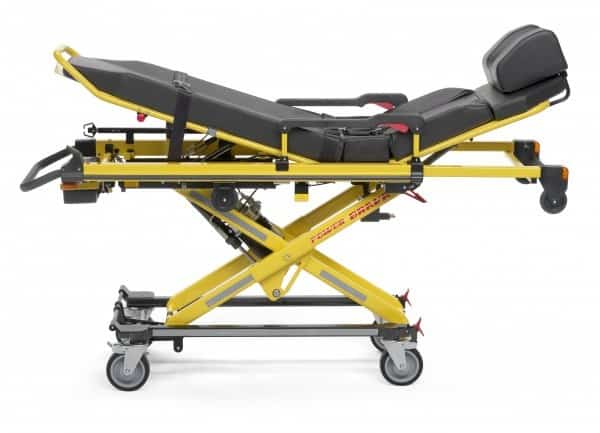
 Can powered stretchers make a difference?
Can powered stretchers make a difference?
A new study shows how paramedics can reduce the risk of injury to themselves while in the process of saving lives.
The research from the University of Waterloo reveals the number of paramedic injuries could be decreased by 78 per cent by switching from manual to powered stretchers.
The study, published in the journal Applied Ergonomics, found paramedics who had access to stretchers with a battery-powered hydraulic system and an assisted ambulance-loading feature experienced significantly fewer musculoskeletal injuries, stated the release.
Steven Fischer, assistant professor of kinesiology, said in many cases, the men and women face spine compression well above the threshold limit.
“A manual stretcher alone can weigh nearly 100 pounds. Add on a 200-pound patient, and a paramedic team is handling 300 pounds every time they raise, lower, lift or load the stretcher,” explained Fischer.
They lift more than 1,700 pounds per shift on average, a weight equivalent to moving all the furniture in a one-bedroom apartment, he added.
According to data from the Ontario Workplace Safety and Insurance Board, incidence rates among paramedics are almost five times higher than in any other sector.
Injury rates were compared between Niagara Emergency Medical Service, which had implemented powered stretchers at the time of the study and Hamilton Paramedic Services, which used manual stretchers.
So what were the results?
Niagara paramedics went from 20 injuries to 4.3 annually out of 100 workers. Meanwhile, injuries increased from 17.9 to 24.6 per 100 workers in Hamilton.
Although each powered stretcher can cost about $40,000, Daniel Armstrong, the study’s lead author and a graduate student in the Department of Kinesiology, said they appear to offer a significant return on investment.
“We found that the added cost to purchase power stretchers and load systems would be recovered within their expected seven-year service life due to the reduction in injury-related costs,” said Armstrong.
“Without them, it’s not a question of if injuries will happen, but when and how many,” said Fischer.
Some Canadians paramedics are already reaping the benefits of powered stretchers. Paramedics in London, Ontario have made the switch with all 35 stretchers at that city’s station. The decision cost more than a million dollars, but they say it’s worth it to avoid back and knee problems and the cost of replacing those too injured to work.
This move was also done due to rising obesity rates in the country. In the 1980s, paramedics were required to lift a maximum of 165 pounds, these days, 10 per cent of Canadian men weigh at least 228 pounds, wrote EMS director Neil Roberts when he asked Middlesex County council for funding.
Back injuries last year accounted for nearly half of workplace insurance claims at the local EMS at a cost of $160,000, which doesn’t include the expense of modifying responsibilities when paramedics return to work, stated the article.
The powered stretchers support up to 700 pounds with legs that go up and down with the touch of a button.
Jay Loosley, a superintendent at Middlesex-London EMS, believes this is the first time in Ontario where a station has replaced all of the stretchers at once.
“(Paramedics) are really happy about their knees and backs,” said Loosley.
Leave a Reply
You must be logged in to post a comment.



 Share
Share Tweet
Tweet Share
Share




Comment